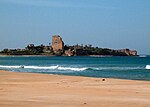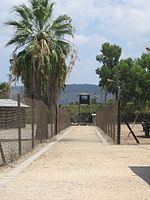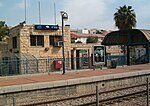Atlit Yam
1984 archaeological discoveries7th-millennium BC establishmentsArchaeological sites in IsraelHistory of fishingMaritime archaeology in Israel ... and 7 more
Megalithic monuments in the Middle EastNeolithic settlementsPopulated places established in the 7th millennium BCPre-Pottery Neolithic BPrehistoric sites in IsraelStone circles in AsiaUnderwater archaeological sites

Atlit Yam is a submerged ancient Neolithic village off the coast of Atlit, Israel. It has been carbon-dated as to be between 8,900 and 8,300 years old. Among the features of the 10-acre (4.0 ha) site is a stone circle.
Excerpt from the Wikipedia article Atlit Yam (License: CC BY-SA 3.0, Authors, Images).Atlit Yam
HaShahaf, Hof HaCarmel Regional Council
Geographical coordinates (GPS) Address External links Nearby Places Show on map
Geographical coordinates (GPS)
| Latitude | Longitude |
|---|---|
| N 32.710827777778 ° | E 34.93515 ° |
Address
Atlit Yam
HaShahaf
Hof HaCarmel Regional Council
Haifa District, Israel
Open on Google Maps











